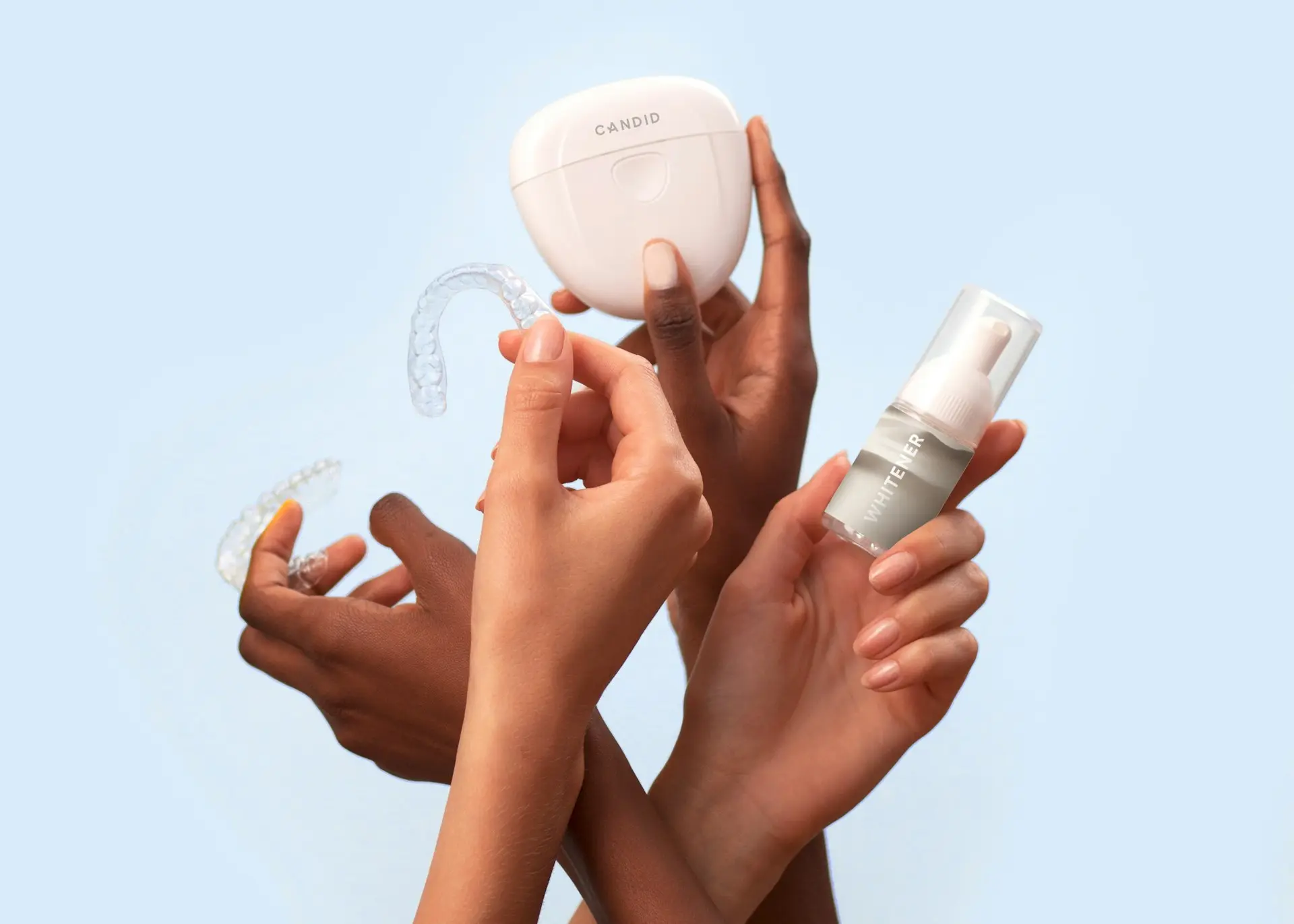Invisalign
Invisalign is a popular orthodontic treatment option that uses clear, removable aligners to straighten teeth and correct various dental misalignments. Unlike traditional braces, Invisalign aligners are nearly invisible and offer a more discreet and comfortable alternative for achieving a straighter smile.
Invisalign treatment involves a series of custom-made aligners that gradually shift teeth into the desired position. Each set of aligners is worn for about 1-2 weeks before being replaced with the next set in the series, gradually moving the teeth closer to their final alignment. The treatment process typically lasts from several months to a year or more, depending on the complexity of the case.
Gallery
Visual insights to help you understand what to expect from your treatment. For more content, please refer to our Education Hub.

Benefits & Considerations
Everything you need to know to make an informed decision about your treatment.
Benefits
Discreet Appearance
Invisalign aligners are made of clear, transparent plastic material that is nearly invisible when worn, making them a more discreet option compared to traditional metal braces.
Removability
Invisalign aligners are removable, allowing patients to eat, drink, brush, and floss with ease. There are no dietary restrictions or difficulties with oral hygiene associated with fixed braces.
Comfort
Invisalign aligners are custom-made for each patient using smooth, comfortable plastic material, reducing the risk of irritation or discomfort often associated with metal brackets and wires.
Predictable Results
Invisalign treatment utilizes advanced 3D imaging technology to create a personalized treatment plan, allowing patients to visualize the projected outcome before starting treatment.
Convenience
Invisalign treatment typically requires fewer in-office visits compared to traditional braces, as there are no adjustments or wire changes needed. Patients receive multiple sets of aligners at once and change them at home according to the prescribed schedule.
Considerations
Comfort and Irritation
Users often experience some discomfort initially as the teeth begin to shift, however it usually subsides after a few days. Unlike traditional braces, Invisalign aligners are smooth and do not typically irritate the soft tissue in the mouth but poorly trimmed aligners may have edges that can irritate the gums, cheeks, or tongue.
Treatment Duration and Compliance
The overall treatment time can sometimes be longer than expected, especially if the aligners are not worn as directed. Effective treatment requires the aligners to be worn about 22 hours a day. Failure to do so each day can prolong treatment and compromise results.
Effectiveness
Invisalign may not be as effective for more complex orthodontic cases or for movements such as rotating canines or moving teeth vertically. As with traditional braces, teeth can shift back to their original position if retainers are not worn as directed after treatment.
Oral Hygiene
Poor oral hygiene during treatment can lead to plaque buildup since aligners cover the teeth and can trap food and bacteria. This can increase the risk of tooth decay and gum disease. Aligners need to be cleaned regularly to prevent discoloration and odor; failure to keep aligners clean can also contribute to dental health problems.
Treatment Procedure
Let's walk through your treatment procedure from start to finish.
Consultation
During the initial consultation, the dentist evaluates the patient’s dental condition, discusses treatment goals, and determines if Invisalign is the right option.
Treatment Planning
Using 3D imaging technology, a customized treatment plan is developed to map out the desired tooth movements and create a series of aligners to achieve the desired results.
Aligner Fabrication
Based on the treatment plan, a series of clear aligners are custom-made for the patient using advanced computer-aided manufacturing techniques.
Treatment
The patient wears each set of aligners for about 20-22 hours a day, removing them only for eating, drinking, brushing, and flossing. Aligners are changed approximately every 1-2 weeks as directed by the dentist.
Progress Monitoring
Regular follow-up appointments are scheduled to monitor treatment progress, make any necessary adjustments, and provide the next sets of aligners in the series.
Post-Operative Care
Simple steps to protect your smile and ensure optimal results in the days following your procedure.
Compliance
It is essential to wear the aligners as prescribed by the dentist to ensure treatment progress and achieve optimal results.
Consistency
Consistency is key to effective treatment. Always use clean hands when handling your aligners.
Oral Hygiene
It is essential to maintain good oral hygiene during Invisalign treatment. Brush your teeth after before reinserting your aligners to prevent plaque buildup and staining. Clean your aligners daily with lukewarm water and a mild soap, avoiding toothpaste, which may scratch the plastic.

Invisalign offers a modern, discreet, and convenient orthodontic treatment option for straightening teeth and correcting various dental misalignments. With its clear aligners and personalized treatment approach, Invisalign provides patients with a comfortable and effective way to achieve a straighter smile and improved oral health. If you’re interested in Invisalign treatment, schedule a consultation with your dentist to determine if it’s the right option for you.